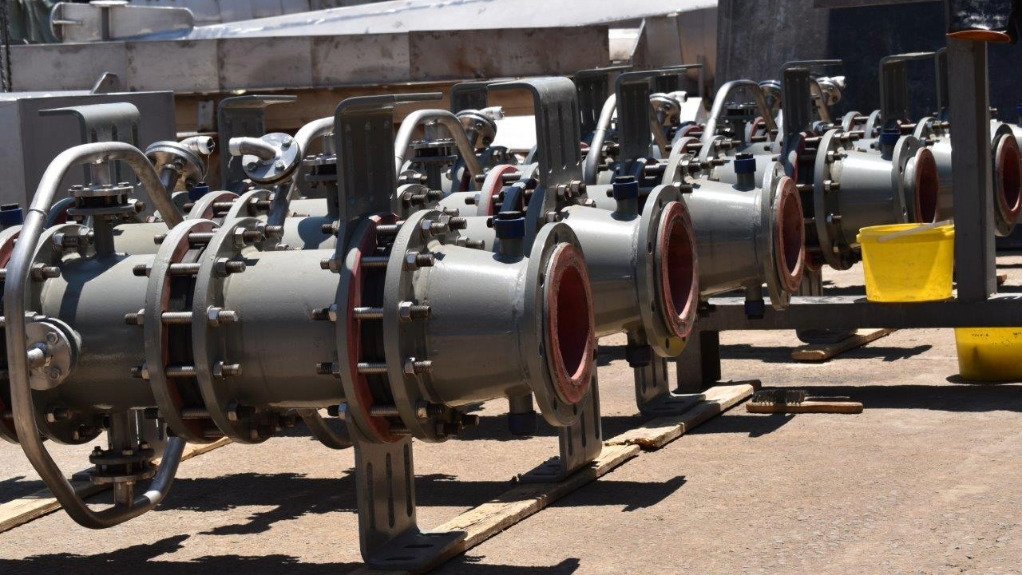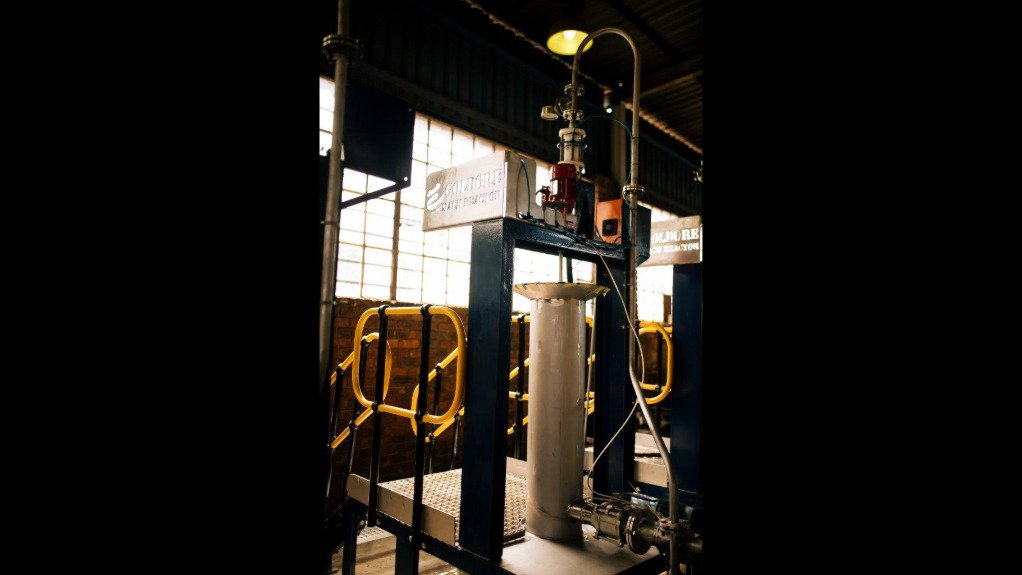Metallurgical technology company GoldOre has made concerted efforts to optimise the energy efficiency of its MACH Reactor – an industrial-scale hydrodynamic cavitation device.
The company has systematically designed out wasteful structures, reducing power consumption by up to 70%, says GoldOre founder Adrian Singh, adding that this reduction contributes to lower operational costs and a significantly smaller carbon footprint, making the technology more economically and environmentally viable than it was prior.
The reactor uses cavitation energy for particle breakage and surface cleaning, simultaneously generating pico, nano and micro-bubbles as part of an innovation that has significant beneficiation benefits for gold processing.
Pico bubbles in gold ore processing improve oxygen use efficiency in gold plants, notes Singh.
“Where the MACH Reactor is installed in . . . pre-oxidation and boosted leach applications, we dramatically improve leach kinetics, requiring only 30% of installed leach capacity while increasing overall recovery by between 4% and 10% depending on the ore.”
The reactor also presents a “formidable solution” to a longstanding issue in flotation, whereby conventional flotation systems struggle to recover valuable fine minerals below 10 μm, as a result of the difficulty in achieving collision and attachment with flotation-sized bubbles ranging from 3 mm to 6 mm in size, he says.
During the cavitation in the MACH Reactor’s venturis, pico bubbles nucleate directly on the surface of fine, hydrophobic mineral particles, enabling them to effectively “give birth” to the bubbles, notes Singh.
The pico-bubble-coated particles naturally aggregate, thereby gaining sufficient mass to attach to conventional flotation bubbles and, consequently, solving the problem of low attachment probability, he explains.
The metallurgical sector has long grappled with the challenge of poor mass transfer in gold plants, evidenced by traditional leach tanks being designed to keep solids in suspension, rather than optimising reaction kinetics, which is a crucial factor when dealing with the heterogeneous, multiphase nature of gold mine slurries.
“Gold leach reactions are diffusion-rate controlled and may be improved by more efficient mixing,” he adds.
The result, says Singh, is a significant improvement in leach efficiency and reagent use, driving higher profitability.
Flotation processes have historically depended on increasing energy input to improve recoveries and concentrate grades, but Singh says existing flotation machines have reached their energy limits, as any further increases in energy input beyond a certain point result in a sharp fall-off of adsorbed power, as a result of excessive void formation around the rotors.
The MACH Reactor overcomes this limitation with its unique hydrodynamic venturi design and absence of moving parts, enabling the technology to surpass conventional energy input thresholds and substantially enhance collision efficiency – an essential factor in flotation. ![]()







